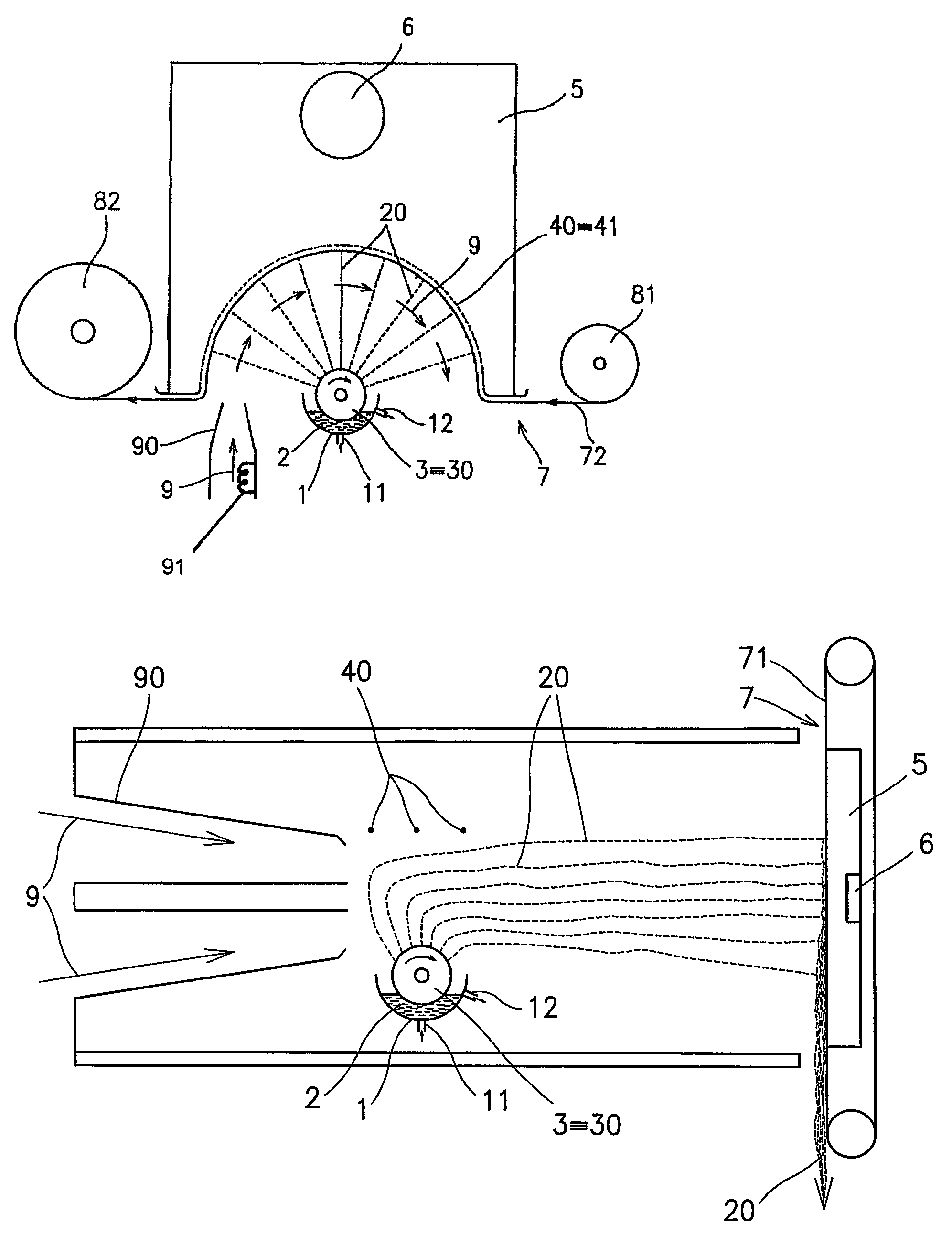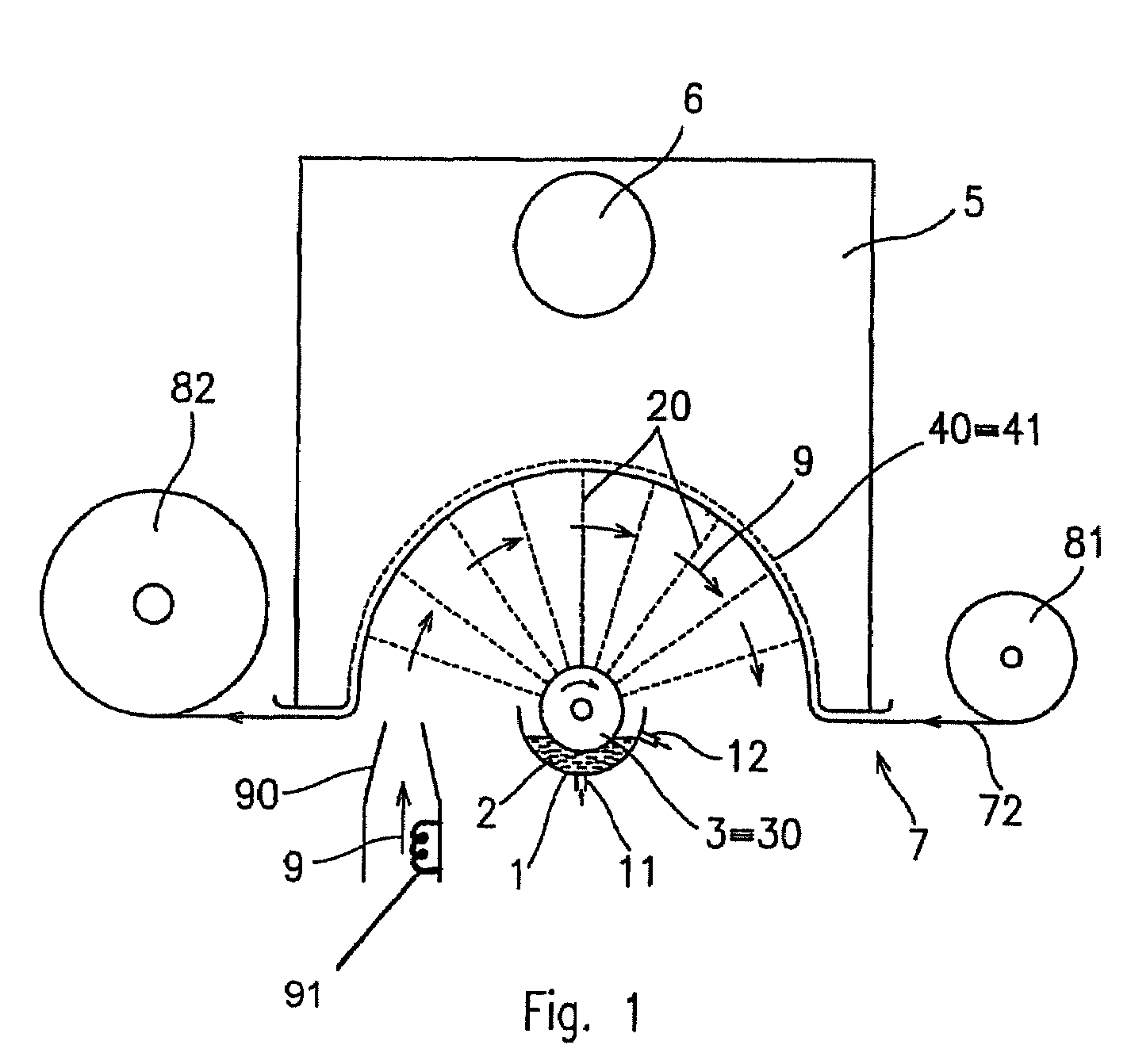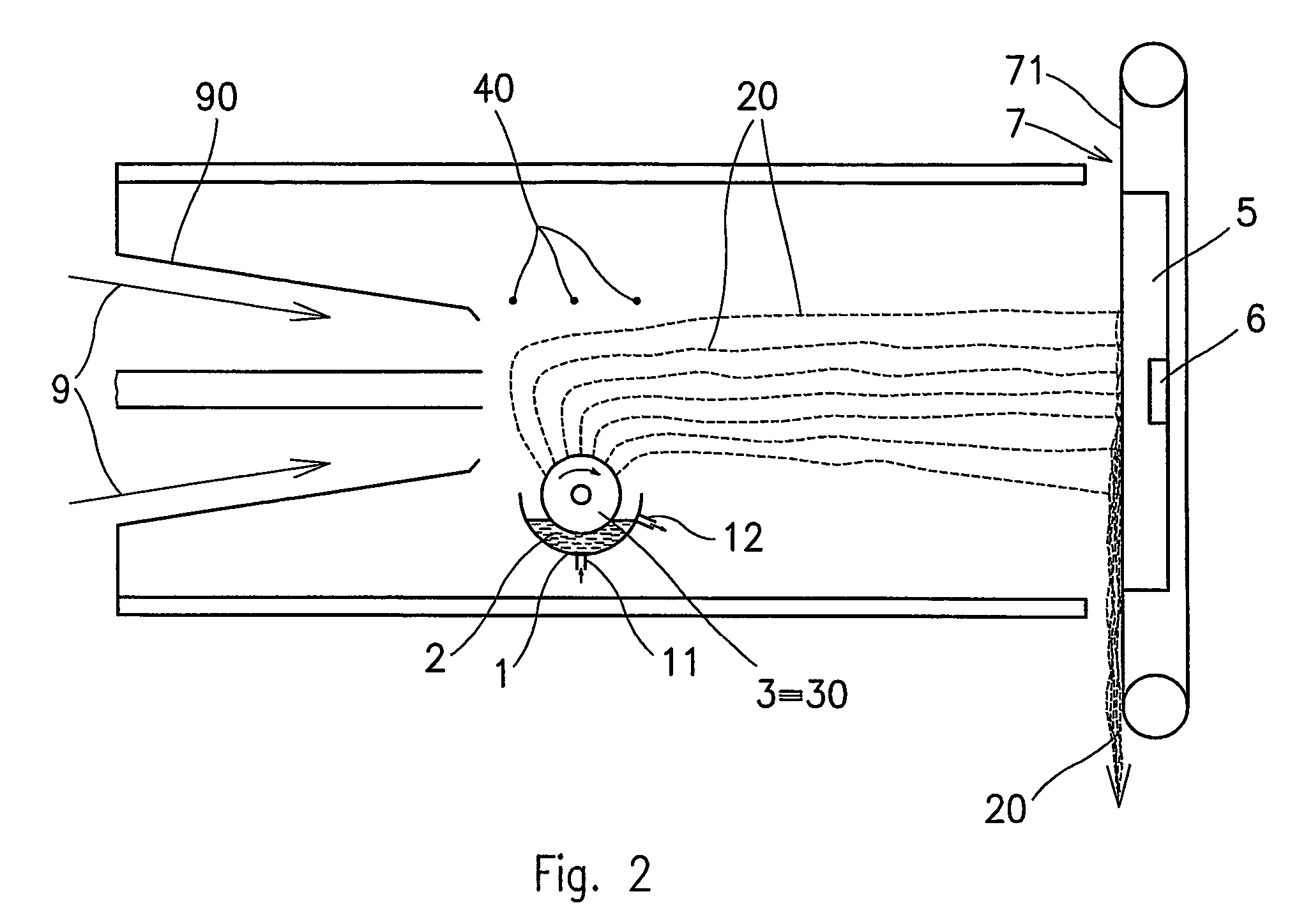Method of nanofibres production from a polymer solution using electrostatic spinning and a device for carrying out the method
a technology of electrostatic spinning and nanofibres, which is applied in the direction of spinnerette packs, manufacturing tools, melt spinning methods, etc., can solve the problems of small amount of polymer material that can be processed in a given time, and the production of nanofibres is very problematic, so as to increase the productivity of the device, increase the drying efficiency, and increase the effect of productivity
- Summary
- Abstract
- Description
- Claims
- Application Information
AI Technical Summary
Benefits of technology
Problems solved by technology
Method used
Image
Examples
example of embodiment 1
[0048]The polymer solution container 1 of the device according to FIG. 1 is being filled with 12% aqueous polyvinyl alcohol solution with 88% degree of hydrolysis of a molecular weight M.sub.w=85,000, containing 5 mole percent citric acid as a crosslinking agent referred to structural units of the polymer. The viscosity of the solution is 230 mPas at 20 degrees C., the specific electric conductivity is 31 mS / cm and the surface tension is 38 mN / m. The polymer solution 2 flows into the container 1 through an inlet 11 and flows off through an outlet 12 while the level height of the polymer solution 2 in the container 1 is maintained using the position of the outlet 12. The charged electrode 30 consists of a cylinder 3 of 30 mm in diameter as in the embodiment according to FIG. 5c, and it is rotating clockwise at 2.5 RPM. The cylinder 3 is connected to a +40 kV DC voltage source. The device is manufactured according to FIG. 1, and a backing fabric forming a planar supporting material 72...
example of embodiment 2
[0049]The polymer solution container 1 of the device according to FIG. 2 is being filled with 10% aqueous polyvinyl alcohol solution with 98% degree of hydrolysis of a molecular weight M.sub.w=120,000, containing 5 mole percent citric acid as a crosslinking agent referred to structural units of the polymer. The viscosity of the solution is 260 mPas at 20 degrees C., its specific electric conductivity has been adjusted by an addition of a small amount of aqueous NaCl solution to 25 mS / cm, and the surface tension has been adjusted by the addition of 0.25% nonionogene surface active agent to 36 mN / m. The polymer solution 2 flows into the container 1 through an inlet 11 and flows off through an outlet 12, and the position of the outlet 12 determines the level height of the polymer solution 2 in the container 1. The cylinder 3 forming the charged electrode is 50 mm in diameter and has a smooth surface as described in FIG. 5a. The cylinder 3 is connected to a +40 kV DC voltage source, and...
PUM
| Property | Measurement | Unit |
|---|---|---|
| diameters | aaaaa | aaaaa |
| diameters | aaaaa | aaaaa |
| diameters | aaaaa | aaaaa |
Abstract
Description
Claims
Application Information
 Login to View More
Login to View More - R&D
- Intellectual Property
- Life Sciences
- Materials
- Tech Scout
- Unparalleled Data Quality
- Higher Quality Content
- 60% Fewer Hallucinations
Browse by: Latest US Patents, China's latest patents, Technical Efficacy Thesaurus, Application Domain, Technology Topic, Popular Technical Reports.
© 2025 PatSnap. All rights reserved.Legal|Privacy policy|Modern Slavery Act Transparency Statement|Sitemap|About US| Contact US: help@patsnap.com



